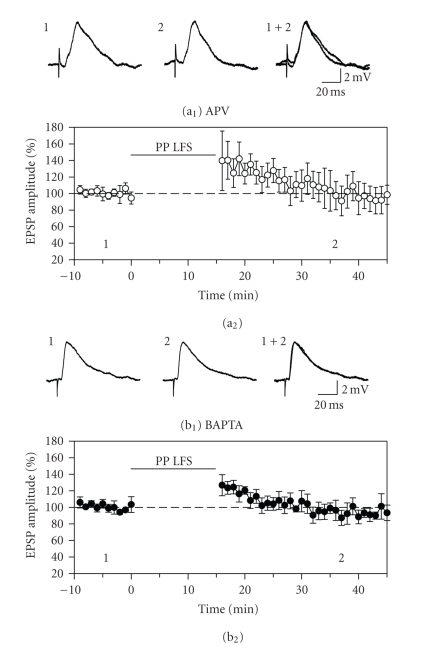Figure 2.
The induction of long-term depression is dependent on activation of NMDA glutamate receptors and on increases in postsynaptic calcium. (a) Constant bath application of the NMDA receptor antagonist APV (50 μM) blocked the induction of long-term depression by 15 minutes of paired-pulse low-frequency stimulation (PP LFS). (b) Blocking increases in postsynaptic calcium by including the calcium chelator BAPTA (10 mM) in the recording electrode solution also blocked the induction of LTD. The transient facilitation of EPSPs immediately following stimulation was significant for the BAPTA condition but not the APV condition, and responses were at baseline levels at the end of the recording periods. The block of lasting depression suggests that calcium influx via NMDA receptors is required for induction of LTD.

